Physicians & Surgeons Dermatology:
 Udl Laboratories Laboratories Medical in Largo, FL
Udl Laboratories Laboratories Medical in Largo, FL 13701 66th St
 International Medical Laboratory Laboratories Medical in South Pasadena, FL
International Medical Laboratory Laboratories Medical in South Pasadena, FL 1446 Pasadena Ave S
 Zoe Scripts Laboratory Services Laboratories Medical in Lutz, FL
Zoe Scripts Laboratory Services Laboratories Medical in Lutz, FL 4969 Van Dyke Rd
 Rads Mobile X-Ray & Ekg Services Laboratories Medical in Clearwater, FL
Rads Mobile X-Ray & Ekg Services Laboratories Medical in Clearwater, FL 13773 Icot Blvd
 Etsec Laboratories Medical in Seminole, FL
Etsec Laboratories Medical in Seminole, FL 10801 Johnson Blvd
 Baycare Laboratories Laboratories Medical in Saint Petersburg, FL
Baycare Laboratories Laboratories Medical in Saint Petersburg, FL 1201 5th Ave N
Dermatology Associates of Tampa Bay Service List
Photos:
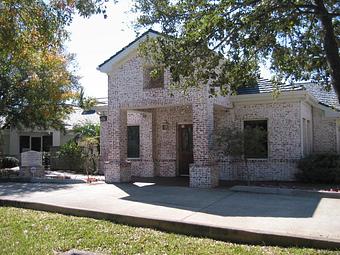
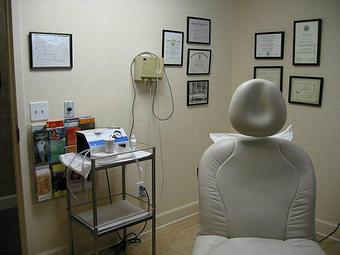

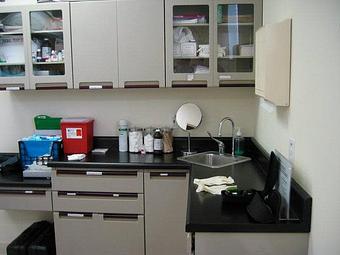
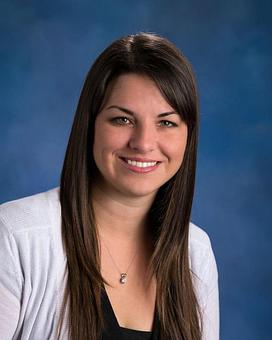


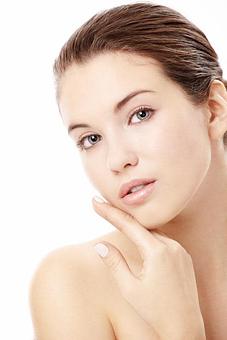
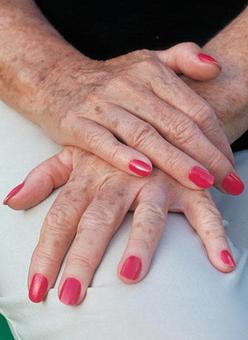

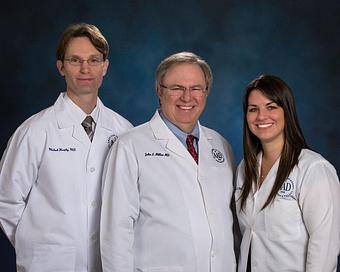
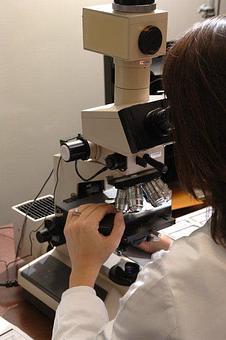

Tampa Cosmetic Enhancements
Botox
Botox is a popular non-surgical injection that temporarily reduces or eliminates frown lines, forehead creases, crows’ feet near the eyes and thick bands in the neck. The purified protein blocks the nerve impulses, temporarily relaxing the muscles that causes wrinkles while giving the skin a smoother, more refreshed appearance. Studies have also suggested that Botox is effective in relieving migraine headaches, excessive sweating and muscle spasms in the neck and eyes. Dermatology Associatess of Tampa is Tampa Bay's premier choice for Botox treatments.
BOTOX is safe.
Since 1989 BOTOX has been used to treat many diseases. It is used in children as young as 2 years old to treat cerebral palsy. These children receive over 10 times the amount used for Cosmetic treatments – every 3 months.
It can take up to 2 weeks to take full effect.
Usually we ask patients to wait 14 days in order to fully see the results.
Results can last up to 4 months and may very.
BOTOX Cosmetic has been used to treat a million people in the United States
since it was approved by the Food and Drug Administration (FDA) in 2002 for the temporary treatment of moderate to severe frown lines between the brows in people ages 18 to 65.
Chemical Peels
Chemical peel uses a chemical solution to improve and smooth the texture of the facial skin by removing its damaged outer layers
It is helpful for those individuals with facial blemishes, wrinkles and uneven skin pigmentation. Phenol, trichloroacetic acid (TCA), alphahydroxy acids (AHAs), and glycolic acids are used for this purpose.
Glycolic peels are acids used to exfoliate the skin.
These peels have been shown to improve fine lines and wrinkles, smooth mild acne scars, reduce the appearance of light brown spots, and give a refreshing glow to your skin. After the peel, skin will be red and you will have a sunburn feeling, and you are able to return to normal activities. It is recommended that make-up not be applied for 24-48 hours.
Peels begin at strength of 70% glycolic acid and increase in percentage over the course of your treatment up to 99%
the physician assistant will determine the right program for your skin. Generally, a series of three to six treatments are required for optimum results. These are spaced two or three weeks apart. The results of the peel are quickly evident.
The medical peel process takes about 15-20 minutes.
Microdermabrasion
The microdermabrasion procedure takes approximately 15-20 minutes. Results are not permanent and may be maintained with periodic retreatment as determined by the doctor or physician assistant. Microdermabrasion is a skin-freshening technique that helps repair facial skin that takes a beating from the sun and effects of aging. Maintenance of results requires periodic repeat treatments after the initial regimen is completed. Microdermabrasion may be combined with a light chemical peel to increase the effect. Dermatology Associates of Tampa Bay utilizes The DiamondTome Skin Resurfacing System, as seen on Extreme Makeover. Key points about the system:
Exfoliation occurs only as the wand is drawn across the skin.
No loose crystals or other abrasives that contaminate you or your environment.
Even at its highest settings, DiamondTome is regarded as a gentler resurfacing system yet provides more dramatic results than other skin care systems.
Achieve skin rejuvenation without the adverse effects of loose particles, burning, irritation, and skin reactions.
The precise diamond wand chip size and vacuum settings assure the appropriate amount of exfoliation that will produce uniform results.
Laser Hair Removal
Laser hair removal works by sending a beam of laser light to a group of hair follicles with enough power to disable or destroy the root
but not enough power to harm the surrounding skin. This process is called selective photothermolysis.
It is selective because it targets only the hair and not the skin.
Photo means light and thermolysis means destroying with heat. The surrounding skin is usually cooled. Some methods include a gel, a spray, or a cooling tip. The laser beam finds the hair follicles by targeting the substance that gives skin and hair dark color – melanin. Therefore, the ideal candidate for laser has dark hair and light skin.
The laser will not work on people with red, white, gray or true blond hair.
The hot laser will also be attracted to the melanin in the skin, so people with suntans, or dark skin types are at more of a risk for discoloration of pigment and other side effects. We can treat all skin types I-VI.
Laser Vein Removal
Sclerotherapy is non-surgical technique used in the treatment of spider and varicose veins.
After a hypertonic saline solution is injected into the vessels with a tiny needle, the veins seal themselves off and are absorbed by the body. Since blood flow is redirected toward the many other normal veins, it is not hindered in any way.
Laser vein therapy utilizes the Cutera Coolglide 1064 Nd
YAG laser to treat both superficial facial vessels and larger, darker spider veins on the trunk and extremities. The laser allows treatment is optimal for those who wish to avoid painful injections. Pulses of light are sent through the vein, which causes the blood to coagulate. The vessel is then absorbed into the body and is no longer visible on the skin. The advanced technology of the Cutera laser is safe for all skin types.
Several treatments may be necessary.
Slight local swelling and reddening of the treated areas may occur but usually resolve with 24-48 hours. Results may not be apparent for several months.
A careful evaluation by your physician will help you determine if sclerotherpy is right for you.
Sunspots
Sun spots (age spots), also known as lentigines
are harmless, flat, brown discolorations of the skin which usually occur on the back of the hands, neck and face of people older than 40 years of age. These spots more than anything else, give away a person’s age. Sunspots are caused by the skin being exposed to the sun over many years and are a sign of sun damage. If you do not believe that these brown marks on the back of your hands and face are caused by sunlight, look at the skin on your inner thigh.
You will see that the skin of the inner thigh is completely devoid of age spots.
Sunspots are harmless and do not need to be treated unless they are changing or getting bigger than the surrounding sun spots.
The only way to prevent age spots is to use liberal amounts of sunscreen before the age of forty, avoid the sun, and wear protective clothing.
These measures will also help prevent the formation of skin cancer and wrinkles.
Intense Pulse Light (IPL)
Intense Pulsed Light TM (IPL) skin treatments using the photorejuvenation process represent a breakthrough in age-defying skin care.
This new technique treats skin damage non-invasively, there is no disruption of the skin’s epidermal surface. IPL treatments address the effects of photo aging and sun damage with low risk of complications and minimal recovery time.
IPL is the gold standard for photorejuvenation.
This FDA-cleared, patented technology provides dramatic results for a variety of benign conditions, including age spots, sun-induced freckles, symptoms of rosacea, birthmarks, unsightly veins, acne scarring and other blemishes.
Laser Genesis / Rejuvination
The Laser Genesis procedure utilizes laser technology to safely, discreetly and effectively treat scars and diffuse and excessive redness.
Laser Genesis is a comfortable non-ablative, non-invasive form of skin therapy. Our patients have noticed dramatic improvements in uneven skin texture, large pores, fine lines and wrinkles. You can expect to see subtle yet consistent results after each treatment, without unwanted side effects such as bruising or excessive skin irritation.
Your therapy can be performed in a relaxed, comfortable manner without the use of topical anesthetics or gel.
Laser Genesis Skin Therapy patients report excellent results over their entire faces and necks. Additionally, we may suggest this therapy to diminish recent scars on other parts of the body. It works by gently heating the upper dermis well below your skins surface. Laser Genesis Skin Therapy stimulates collagen production and remodeling. Additional heat is generated in dilated capillaries to reduce redness. The technology essentially tricks the body into activating the skins healing response to dermal injury while leaving the surface of your skin unharmed.
Classic Revitalizing Facial
This Revitalizing facial is customized for your skin’s needs. We ensure a relaxing 50 minute escape and a healthy glow that continues as you go on with your day: Cleansing, Toning, Exfoliation, Extractions, Calming face massage, Calming hand massage, Mild peel/mask, Moisturizing.
Express Revitalizing Facial
Try the abbreviated version of our Classic Revitalizing facial. Your skin will be cleansed, exfoliated, purified and moisturized in just 25 minutes!
Facial Waxing
Eyebrows, sideburns, or any other facial feature waxing performed.
Medical Procedures
Conditions
Our highly skilled team of medical professional are equipped to provide specialized treatment and the highest level of medical care of common hair, skin, and nail conditions including:
Acne
Rosacea
Eczema
Psoriasis
Hair Loss
Skin Cancer Prevention
Skin Iritations
Acne
Acne lesions usually occur on the face, neck, back, chest, and shoulders. Cause: Acne occurs when excess oil (sebum) production combined with dead skin cells clog pores.
Eczema
Symptoms of this skin disease are dryness of the skin, inflammation, persistent itching, and blistering. Cause: the chronic, adult form of eczema usually occurs in persons with a family history of allergies
Perioral Dermatitis
Symptoms of this skin disease are pink bumps that appear around the mouth and sometimes around the eyes and reddening of the affected area. Cause: there is some evidence that fungi and bacteria may be underlying causes of this disease.
Psoriasis
Cause: most likely an abnormality in the functioning of white cells in the blood stream triggering inflammation in the skin: flare-ups sometimes occur in the winter, as a result of dry skin.
Contact Dermatitis
Contact dermatitis is a skin reaction that occurs after you have been exposed to a substance that either irritates your skin or triggers an allergic response.
If your skin condition is caused by contact with an irritating or harsh substance, you have primary irritant contact dermatitis. Irritant contact dermatitis results from toxic irritation of the skin usually resulting from exposure to generous amounts of an offending agent. Allergic contact dermatitis, on the other hand, is an immunologic response usually requiring only minimal amounts of the offending agent to illicit a response. The symptoms and treatment of both types of contact dermatitis are similar.
Fluid-filled bumps or blisters, tenderness and redness of the skin often occur with contact dermatitis.
You may also notice oozing cracks or fissures in the reddened, irritated skin areas. Usually, these symptoms will occur only in the areas that actually came into contact with the irritant or allergen. This condition is not contagious.
Patch Testing
Patch testing is a way of identifying whether a substance that comes in contact with the skin is causing inflammation of the skin (contact dermatitis).
There are two types of contact dermatitis: irritant contact dermatitis and allergic contact dermatitis. If you have a dermatitis that started recently or if you have a persistent or unusual eczema, your dermatologist may suspect you have an allergic contact dermatitis.
If you have been using a medication or cosmetic on the lower legs, hands, face, ears, eyes, anal or genital region
for a while and subsequently developed dermatitis, your doctor may suspect one of these topical agents as the cause. Patch testing is the only way that your doctor can prove that a substance is inciting your dermatitis. The technique involves taping patches to the back containing numerous chemical allergens to be tested. These patches are left on the skin for 48 hours and then removed. Focal areas of dermatitis signal a positive reaction to an offending chemical. Once an allergen is identified, avoiding it should help cure your dermatitis.
Skin Cancers
Very simply, sunburn and UV light can damage your skin, and the damage can lead to skin cancer.
There are of course other determining factors, including your heredity and the environment you live in. However, both the total amount of sun received over the years, and overexposure resulting in sunburn can cause skin cancer. Most people receive 80% of their lifetime exposure to the sun by 18 years of age. The message to parents from this is to protect your children.
Tanning is your skin’s response to UV light.
It is a protective reaction to prevent further injury to your skin from the sun. However, it does not prevent skin cancer.
Remember, skin cancer can be very slow to develop.
The sunburn you receive this week may take 20 years or more to become skin cancer.
If there is a history of skin cancer in your family, you are probably at a higher risk.
People with fair skin, with a northern European heritage appear to be most susceptible.
The level of UV light today is higher than it was 50 or 100 years ago.
This is due to a reduction of ozone in the earth’s atmosphere.
Aging Skin, Sun Spots
Americans spend billions of dollars each year on skin care products
that promise to erase wrinkles, lighten age spots, and eliminate itching, flaking, or redness. But the simplest and cheapest way to keep your skin healthy and young looking is to stay out of the sun.
Sunlight is major cause of the skin changes we think of as aging – changes such as wrinkles, dryness, and age spots.
Your skin does change with age. For example, you sweat less, leading to increased dryness. As your skin ages, it becomes thinner and loses fat so it looks less plump and smooth. Underlying structures – veins and bones in particular – become more prominent. Your skin can take longer to heal when injured.
You can delay these changes by staying out of the sun.
Although nothing can completely undo sun damage, the skin sometimes can repair itself. So, it’s never too late to protect yourself from the harmful effects of the sun.
Allergic Reactions
An allergy is an overreaction of the immune system toward a substance that is typically harmless to most people.
But in someone with an allergy, the body’s immune system treats the substance, called an allergen, as an invader and reacts inappropriately resulting in harm to the person.
In most common type of allergy, at the first exposure to an allergen, the immune system produces an antibody called immunoglobulin E (IgE).
With each subsequent exposure, the body produces more IgE, which attaches itself to two types of cells in the body called mast cells and basophils. The allergen attaches to the IgE, and the mast cells and basophils are activated to release histamine and other chemicals to defend against the allergen “invader.” It is the release of these chemicals that causes allergic reactions, as the body attempts to rid itself of the invading allergen.
Some of the most common allergies include those to food and to airborne allergens such as pollen, mold, dust mites, and animal emanations.
Allergies can be seasonal, like pollen or certain molds, or year-round, like dust mites. Regional differences also occur since different allergens are more prevalent in different parts of the country or the world.
Pre Cancerous Spots
Association with contact to the suns rays causes precancerous skin growths called solar keratoses.
Applying sunscreen every day rather than only on sunny ones makes a big difference when it comes to fighting the early signs of skin cancer. A new study shows that daily use of sunscreen is much more effective than occasional use in preventing precancerous skin growths. Of course, we all know that the sun (Ultraviolet Rays) is the main cause of our wrinkles. Sun breaks down collagen and destroys the skin’s elasticity. Also, it causes brown spots and discolors the skin. If you take oral contraceptive or hormonal medication for menopause, you should be really careful getting brown spots under the eyes.
How to make Sunscreen a Daily Habit
We are often deceived by hazy weather or cloudy days, but the damaging UV is still getting through. You should apply sunscreen 30 minutes before you are actually at the beach or being outside. Because it takes about 30 minutes for sunscreen to be absorbed completely into the skin and waiting this long before going out in the sun offers the best protection from the sun’s damaging UVA and UVB rays.
Mole Evaluation/Removal
As ozone becomes less, more ultraviolet light pierces the atmosphere and penetrates into the skin where it can change certain skin growths into cancers.
The most common of these skin growths are moles, which come in different sizes, shapes, colors, and types.
There may be just one or a few or there may be a dozen or more scattered over the body. They come at any age from early childhood on. Keep in mind that any growth that is present from birth is more likely to be a congenital birthmark.
It is the case that moles have a strong hereditary occurrence.
It is common to hear of more than one member in a family with multiple moles; siblings; parents; grandparents; cousins; and so on.
Moles may be pigmented or non-pigmented.
If pigmented, color may vary from light tan to black. A mole that is blackish in color, and especially if elevated and rough in appearance, may be melanoma. It is important to have this one checked by the doctor and closely watched over time. Sometimes it is necessary to remove the mole since it is the type that is most likely to become cancerous.
Hair Disorders
Hair disorders can be caused by any of the following:
Alopecia (non scarring)
skin disorders, certain drugs, certain diseases, autoimmunity, iron deficiency, severe stress, scalp radiation, pregnancy, or pulling at your own hair.
Alopecia (scarring)
skin disorders, diseases, or bacterial infections.
Hirutism
excess of androgen (steroid hormone that stimulates development of male sex organs and secondary sexual characteristics). This overproduction of androgen could result from certain drugs or conditions.
Hair shaft disorders
over processed hair (coloring, permanent waves excessive heating) or certain diseases.
Nail Disorders
Our bodies host a variety of microorganisms, some of which are beneficial to us.
These microorganisms also include bacteria and fungi. Fungal infections are caused by microscopic plants that live on our skin and on the dead tissue of our hair and nails. The following list contains the more common nail irregularities, diseases and disorders.
Bacteria, fungi, and some viruses can cause paronychia infections of the nail fold.
The proximal and lateral nails folds act as a banner, or seal, between the nail plate and the surrounding tissue.
Pseudomonas bacterial infection can occur between the natural nail plate and the nail bed, and/or between an artificial nail coating and the natural nail plate.
Many people have been led to believe that the classic ‘green’ discoloration of this type of infection is some type of mold. In actually, mold is not a human pathogen. The discoloration is simply a by-product of the infection and is caused primarily by iron compounds.
Our Staff
Our Staff
Our Entire Staff: Our dedicated, professional staff is trained to assist our physicians and to ensure your comfort at all times. The experienced team work together to develop a specialized program to meet the needs of each individual. Whatever your skin care needs may be, our team is prepared to put you on the road to the most healthy and beautiful skin you can have.

John L Millns, MD John L. Millns M.D.
Dr. John Millns was born in Toledo, Ohio but has been a resident of Florida since 1978. He completed his undergraduate studies at the University of Toledo. He received his medical degree from Ohio State University and trained at the Mayo Clinic in Rochester, MN. Dr. Millns is an associate professor at the University of Florida. Dr. Millns is board certified in both Dermatology and the American Board of Dermatopathology, respectively. Dr. Millns has been in private practice for the past 30 years and is an expert in the treatment of diseases of the skin, hair and nails of all age groups. Dr. Millns specializes in identification and treatment of skin cancers. He is the Director for Gulf Coast Dermatopathology Laboratory. Gulf Coast Dermatopathology services dermatologists from all over the state of Florida and Ohio. He is a member of the American Academy of Dermatology. Florida Society of Dermatology and Dermatologic Surgery, American Society for Laser Medicine and Surgery, West Coast Society of Dermatology, American Academy of Dermatopathology and International Society of Dermatopathology. He has participated in the Great American Teach-In and has done numerous training sessions to train fellow physicians in the field of dermatology and dermatopathology. Dr. Millns takes pride in providing outstanding patient care and providing an environment to make all his patients feel like they are home.

Michael R Heaphy, MD Michael R. Heaphy M.D.
Dr. Michael Heaphy is originally from Lima, Ohio. He received a Bachelor of Science degree from the University of Michigan, Ann Arbor and his medical degree from the University of Texas, Houston. Following an internship at the University of Pennsylvania, Dr. Heaphy spent a year in Latin America. He worked as a volunteer physician in the rainforests of Eastern Guatemala for an indigenous community development organization called Ak’ Tenamit, which provides the only Western-style medical care for 126 remote Q’eqchi Maya villages. He also spent several months with the department of dermatology in one of South America’s leading infectious disease hospitals, Hospital Muniz in Buenos Aires, Argentina. Dr. Heaphy completed his dermatology residency at Wright State University School of Medicine, Dayton, Ohio where he was named Chief Resident in 2003. That year he served as Resident Trustee for the Ohio Dermatological Association. Finally, Dr. Heaphy completed an additional two years of sub-specialty training in dermatopathology at the University of California, San Francisco under Drs. Philip LeBoit and Timothy McCalmont. During that time he also held a clinical instructorship at UCSF and practiced clinical dermatology at San Francisco General Hospital’s dermatology resident’s clinic. Dr. Heaphy has published multiple articles and abstracts in the fields of clinical dermatology and dermatopathology and he enjoys teaching residents and students. He extends an open invitation to anyone interested in dermatopathology to take part in his dermatopathology sign-out sessions.

Laura E Millns PA-C Laura Millns, PA-C
Laura Millns PA-C joined our practice in 2010. She is a native of Tampa, Florida. Laura completed her undergraduate studies at Wake Forest University in Winston-Salem, NC with a major in Biology and a minor in Chemistry. She then went on to complete her Masters of Medical Science degree in Physician Assistant Studies at Midwestern University in Phoenix, AZ. Laura is a fellow of the American Academy of Physician Assistants, Florida Academy of Physician Assistants, and the Society of Dermatology Physician Assistants. She enjoys all aspects of Medical Dermatology, Dermatologic Surgery, and loves to work with our cosmetic patients as well. In her spare time, she enjoys golfing, boating, and traveling.
Sharon Miller, CMM
Sharon Miller was born in Alexandria, Virginia and moved to Florida in 1970. Sharon is married with two children. She received her medical assistant degree in 1980 from Tampa College and joined Dr. Millns practice in 1988. Sharon has been the administrator for the dermatology practice as well as Gulf Coast Dermatopathology since 1998. She has been an integral part of every aspect of both practices and handles all the general administration duties, human resources, billing departments and nursing staff. Sharon is a member in good standing of ADAM (Association of Dermatology Administrators and Managers) and PAHCOM (Professional Association of Health Care Office Management), she received her Certified Medical Manager certificate in 2007.

